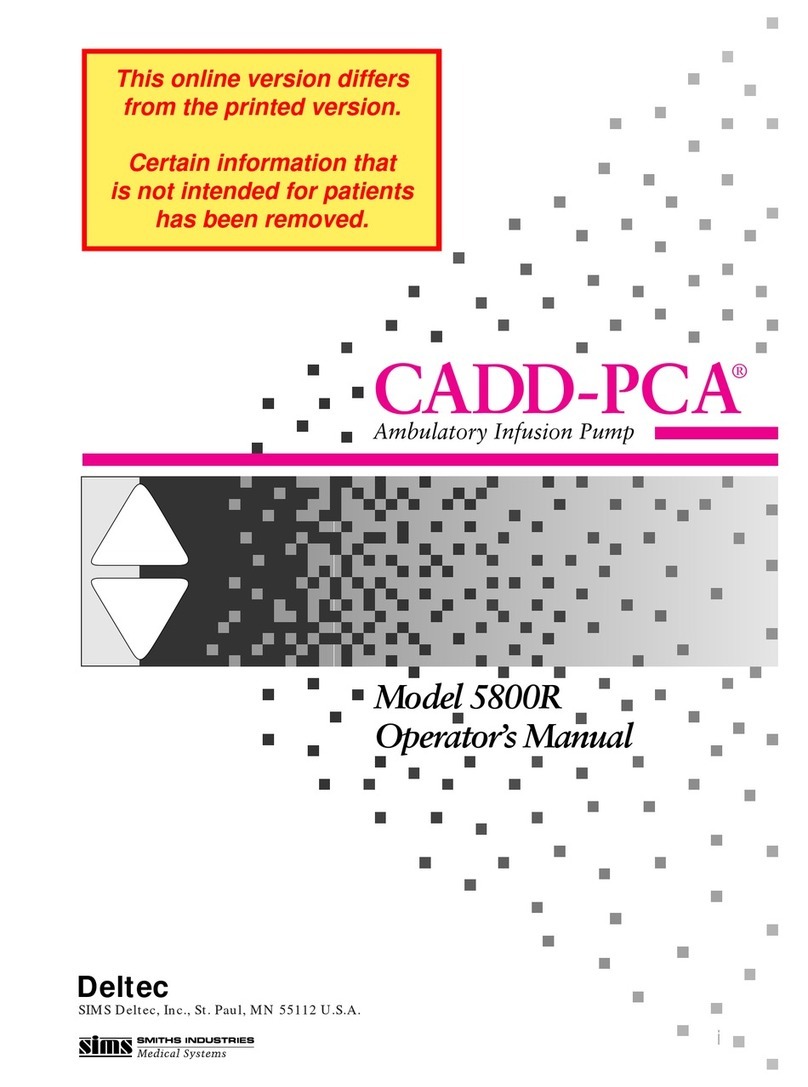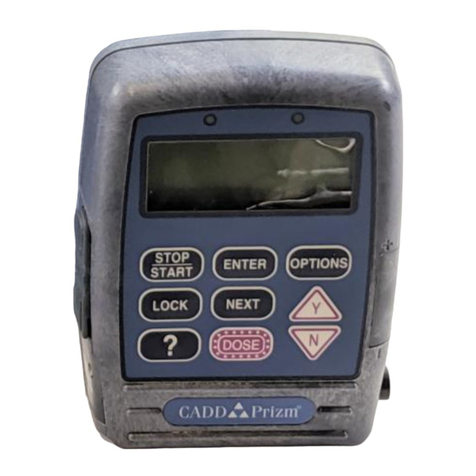
iv
CONTENTS
1.0 INTRODUCTION ........................................................................ 1
2.0 GENERAL DESCRIPTION OF CADD-1®PUMP
OPERATIONS ............................................................................ 1
2.1 WARNINGS and CAUTIONS ............................................. 2
2.1.1 WARNINGS.............................................................. 2
2.1.2 CAUTIONS............................................................... 3
2.2 Physical Description of the Pump and Accessories ........... 4
2.2.1 Items Packaged with the Pump ............................... 5
2.2.2 Description of the Function Keys and Display
Panel ....................................................................... 5
2.2.3 Description of the Reservoir or Administration
Set ........................................................................... 6
2.3 Understanding the Delivery Modes .................................... 7
2.3.1 Description of the Continuous Rate Mode .............. 7
2.3.2 Description of the High Flow Mode ......................... 7
2.3.3 The Continuous Rate (ML) ...................................... 8
2.3.4 The Milliliters Given (ML GIVEN) ............................ 8
2.3.5 The Reservoir-Residual Volume (RES VOL) .......... 8
3.0 OPERATOR INSTRUCTIONS ................................................... 9
3.1 Installing or Replacing the Battery ..................................... 10
3.2 Preparing to Program the CADD-1®Pump ........................ 13
3.3 Programming the CADD-1®Pump for Continuous Rate
Delivery .............................................................................. 16
3.3.1 Setting the Reservoir-Residual Volume
(RES VOL) .............................................................. 16
3.3.2 Setting the Continuous Rate (ML) ........................... 18
3.3.3 Reviewing the ML GIVEN (ML GIVEN) ................... 19


























